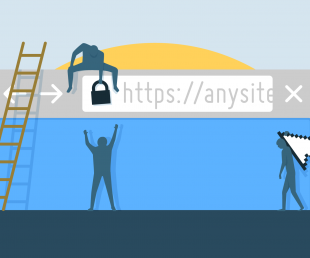You’re heading to a friend’s house when you hear a weird noise coming from your engine. An aggressive driver sideswipes you during rush hour traffic. It’s sweltering outside but your A/C just won’t turn on. The list could go on. There are a lot of things that can go wrong with a car. But the solution comes down to one thing: how to pay for the repairs.
Ideally we’ve all planned for common car expenses, and have a healthy emergency fund for unexpected vehicle repair financing. But ideal is rarely reality, and you have to get your transportation back ASAP. Once you’ve gotten a quote (and decided you want to repair the car versus shopping for a new one) consider these car repair financing options.
How to Pay for Car Repairs
#1: CHECK IF IT’S COVERED
Before you start looking for auto repair loans or shelling out your hard-earned cash, see what’s covered. If you were in an accident, depending on whose fault it was, some or all of your repairs could be covered by insurance. Repairs could also be covered by a warranty or a vehicle recall. Consult your warranty or talk to a dealership to see if the repairs might fall under either of these qualifications. And while they won’t foot the bill for the repairs themselves, roadside assistance programs like AAA can at least defray the cost of a tow truck to get your car to the repair shop.
#2: FINANCING OPTIONS FROM THE REPAIR SHOP
If you can see a way to pay down your repair costs over time, it’s worth checking in with the mechanic to see if they offer any automotive repair financing. If available, this is a quick option because it doesn’t require you going to an outside source, like a bank or other lender, to get financing approved. However, these payment plans still require you to go through an approval process, and they may mean paying a higher total cost or monthly interest.
#3: CREDIT CARDS
Your default thought might be to put the repairs on a credit card, assuming your available credit limit will cover the costs. This is another quick option, since you likely aren’t going to apply for a new credit card specifically to pay for your car repairs. If you think the repair amount is low enough that you’ll be able to pay it off within a month or two, this could be a great option! But be cautious – unless you’re confident in your ability to repay, you might want to consider going another route. Credit card interest rates are typically high, and the debt could pile up faster than you expect.
#4: PERSONAL LOANS & LINES OF CREDIT
While some lenders market them as “auto repair loans,” they’re usually just talking about a basic, unsecured personal loan. While you still have to go through an application process and credit approval, personal loans are a popular choice for financing car repairs. A fixed interest rate and monthly payment make a personal loan easy to budget for, and they can usually be financed relatively quickly.
If you’re considering personal lending options, you should also take a look at personal lines of credit. They have a similar approval process to a lump-sum loan, but give you access to an ongoing pre-determined credit limit for additional flexibility. They typically still have a better rate than a credit card, and because you can reuse a credit line as you repay it up to your limit, it will be available to you if additional repairs or other emergency expenses come up. You can also use a personal line of credit or loan to pay off a credit card.
#5: HOME EQUITY LINES OF CREDIT (HELOC)
Like the idea of a flexible line of credit? If you’re a home owner, you could also consider using a home equity line of credit as a financing option. It offers all of the same benefits of using a personal line of credit, however you may be able to access a higher credit limit or a lower interest rate by using your home as collateral.
While it might take slightly longer to move through the HELOC application process if you don’t already have one, if you pay for repairs with a credit card up front you could use a HELOC to pay off the bill after the fact to avoid getting hit by the higher interest rate.
Once you’re on the road again, consider this a great reminder to plan ahead. Even absent emergencies, cars require care and maintenance. Always be on the lookout for warning signs, and start saving up to avoid future financial stress.



